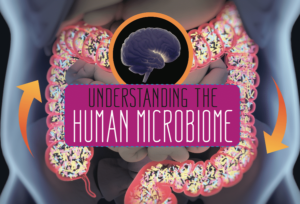Obesity
Question of the Month
It will soon be easier for consumers to make better food and beverage decisions when eating out or on the go. The U.S. Food and Drug Administration (FDA) has moved forward with a food labeling law that requires restaurants, grocery stores and convenience stores with 20 or more locations to post calorie counts for standard menu items. Proponents say calorie disclosures on everything from muffins to lattes to Happy Meals will offer more transparency and will likely encourage diners to downsize their consumption.
Plant Foods Are Good for Our Gut Bugs
Our bodies host a huge population of microorganisms, dubbed the human microbiome. In recent years, the makeup of critters in our guts has been linked to a plethora of conditions, including depression, heart disease and obesity. And now bug-friendly scientists at the University of California, San Diego School of Medicine have presented initial findings from the American Gut Project, a crowdsourced initiative that analyzes people’s survey responses and fecal samples to better understand how things like diet, lifestyle and disease affect the human microbiome.
Time to Snub the Clubs?
The prospect of getting extra bang for their food buck has more people perusing
warehouse-style club stores like Costco and Sam’s Club. But the urge to stockpile large amounts of food in the house may lead to calorie overload.
Exercise and the Gut Microbiome
New research suggests that endurance exercise positively affects the gut microbiome, but only for lean individuals and only for as long as exercise continues. Researchers at the University of Illinois at Urbana-Champaign conducted the study with 32 sedentary men and women—some lean, some obese. The purpose was to explore the impact of endurance exercise on the composition, functional capacity and metabolic output of gut microbiota. Investigators collected samples from the subjects before and after 6 weeks of exercise, then after 6 weeks of no exercise.
Obesity Linked to Lack of Sleep in Childhood
Enforcing bedtime rules may be an important factor in helping kids maintain healthy weight levels. A comprehensive research review of 42 studies with 75,499 participants, conducted by University of Warwick researchers in Coventry, England, found that short sleep durations in infants, children and adolescents were a risk factor for gaining weight and developing obesity. Data analysis showed that children and teens who slept less than others of the same age gained more weight as they grew older and were more likely to become overweight or obese.
Comprehensive Research Project on How to Create an Exercise Habit
24 Hour Fitness® is partnering with the University of Pennsylvania Behavior Change for Good Initiative [BCFG] to support research into what works best for creating lasting exercise habits. With an interdisciplinary team of world-renowned researchers, the BCFG addresses the broader question of how to make positive behavior change stick in aspects of life related to health, education and savings.
The Connection Between Inactivity and Obesity
Can we say that inactivity and obesity are directly related? Scientists are still addressing this issue. The 2018 Physical Activity Council Participation Report shows that 82.4 million people—28% of the American population—are inactive. At the same time, the Centers for Disease Control and Prevention reports that more than one-third (36.5%) of U.S. adults are obese (NCHS Data Brief, No. 219, November 2015).
Exergaming May Improve Independence Among Older Adults
Maybe you’ve thought about integrating exergaming—exercise combined with video games and other elements of technology—into some of your classes or sessions. Don’t forget to include older adults. A recent study found that seniors with mild cognitive impairment (MCI), a precursor to Alzheimer’s, showed significant improvement in certain complex thinking and memory skills after exergaming.
Equal Calories Burned ≠ Same Results
Many people fixate on the number of exercise calories they burn. New research, sponsored by Les Mills International, shows that even when two group fitness activities (indoor cycling and a resistance workout) were matched for duration and caloric expenditure, they did not have equivalent metabolic effects—which could influence long-term training results. Lead study author Nigel Harris, PhD, said, “The type of exercise used to burn those calories . . . impacts the long-term positive effects that exercise has on the body.”
To Grow Healthier, Happier Adults, Raise Fit Kids
Today’s inactive kids are tomorrow’s unhealthy adults. Our society will pay the price for young people’s profound lack of exercise if we fail to turn this trend around. Few behaviors more significantly influence child health than physical activity. Yet children and adolescents are not moving enough, at the expense of their own health as well as that of their communities. More needs to be done to support families and society in raising fit kids.
Stress and Nutrition
Feeling stressed? You’re not alone! The trick is knowing what to do about it.
Research tells us that stress-relieving strategies include making a concerted effort to minimize stressors, engaging in meditation and physical activity, and nurturing strong social relationships.
That’s good advice, but it ignores the common plan that many of us resort to: the “comfort food” strategy.
Body Fat Is Better Indicator of Type 2 Diabetes
Here’s more reason to apply a battery of assessments when determining a client’s health status. Scientists have found that body fat percentage is a more accurate indicator of a person’s risk for prediabetes or type 2 diabetes than other popular measures like body mass index.
What Type of Exercise You Do as a Kid May Determine Your Weight as an Adult
According to new research, the kind of physical activity you do in childhood could predict whether you will be overweight as an adult.
Published in Medicine & Science in Sports & Exercise (2018; 50 [4],
709–14), the study examined the relationship between adult weight gain and the following types of exercise in childhood: running, sports and/or fitness/dance.
Research Update: The Value of Exercise for Women’s Health
Fitness pros have a unique opportunity to take a leadership role by guiding their female clients toward a healthier, movement-oriented lifestyle. This women’s health research update discusses contemporary scientific findings you can use to educate your clients and plan up-to-date programs.
Understanding the Human Microbiome
Exploration of the human microbiome is leading to revolutionary changes in health, wellness and disease management.
High-Intensity Interval Training for Fat Loss
Two recent studies reveal that high-intensity interval training has the ability to produce high-impact fitness gains in a short time frame.
Fit and Fat?
Weight loss may be the number-one goal for your clients, and if pounds don’t melt away quickly, some people may get discouraged and quit. New research strengthens the case that your program is still helping them obtain positive health outcomes, which is motivation to keep striving. In other words: Being fit benefits health even among people with severe obesity.
Behavior Change: What the Research Tells Us
Behavior change psychology has immense value to personal trainers and other fitness pros looking to motivate their clients.
Exercise Doesn’t Have To Be Strenuous To Be Effective
We know that replacing sedentary behavior with physical activity yields numerous benefits. And while high-intensity models are touted as a way to fast-track success, a new study out of Sweden says it’s not necessary to go all-out in order to boost health.
Location Is Everything When It Comes to BMI
The results are in: According to a new study, people who live within close proximity to a gym or activity center weigh less than those who don’t. Access to fast-food restaurants may also affect weight, say the study’s authors.


















